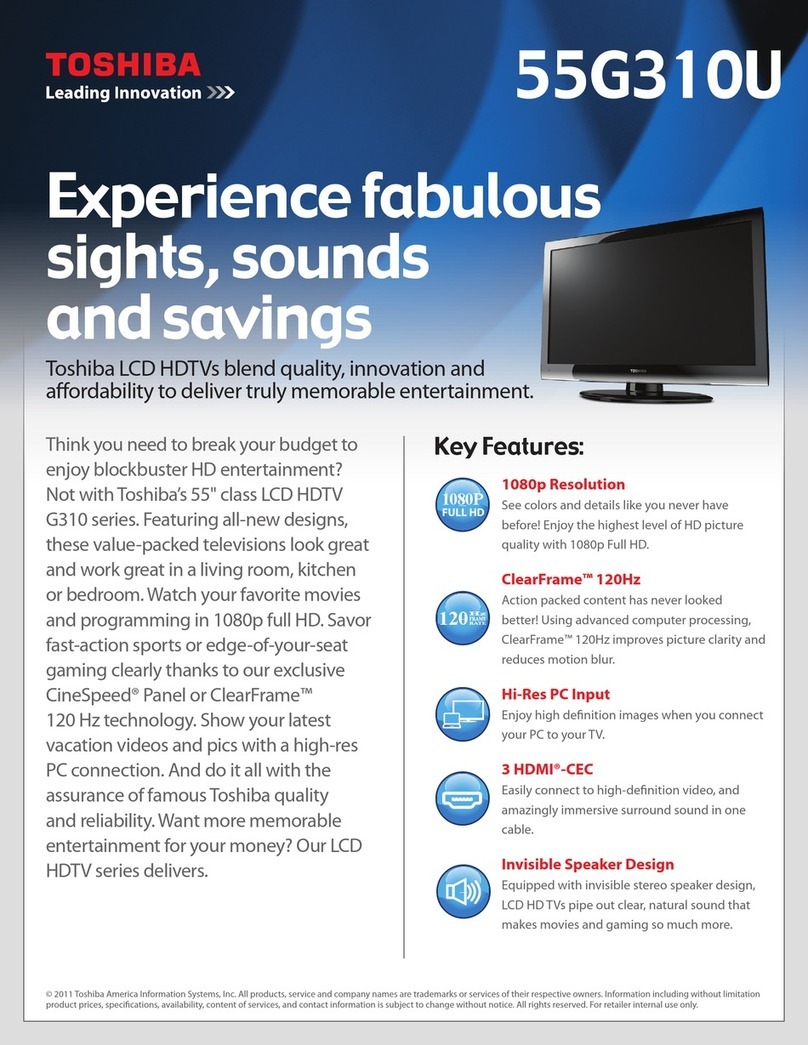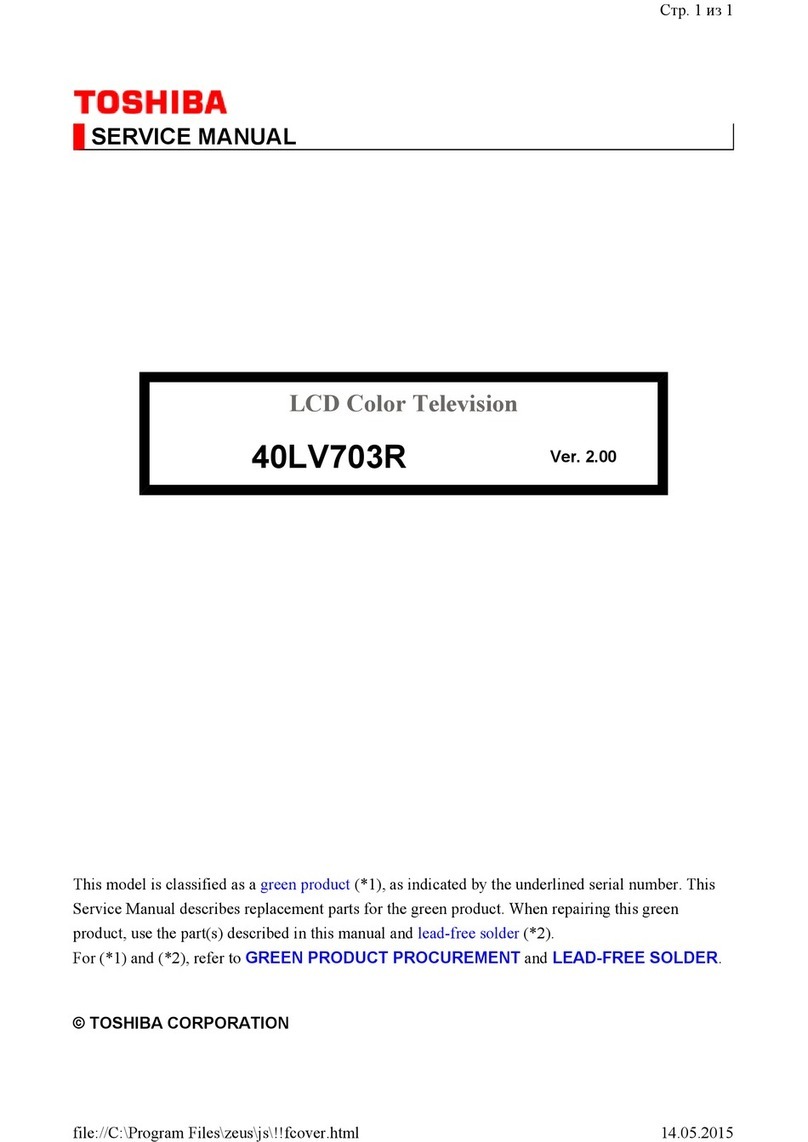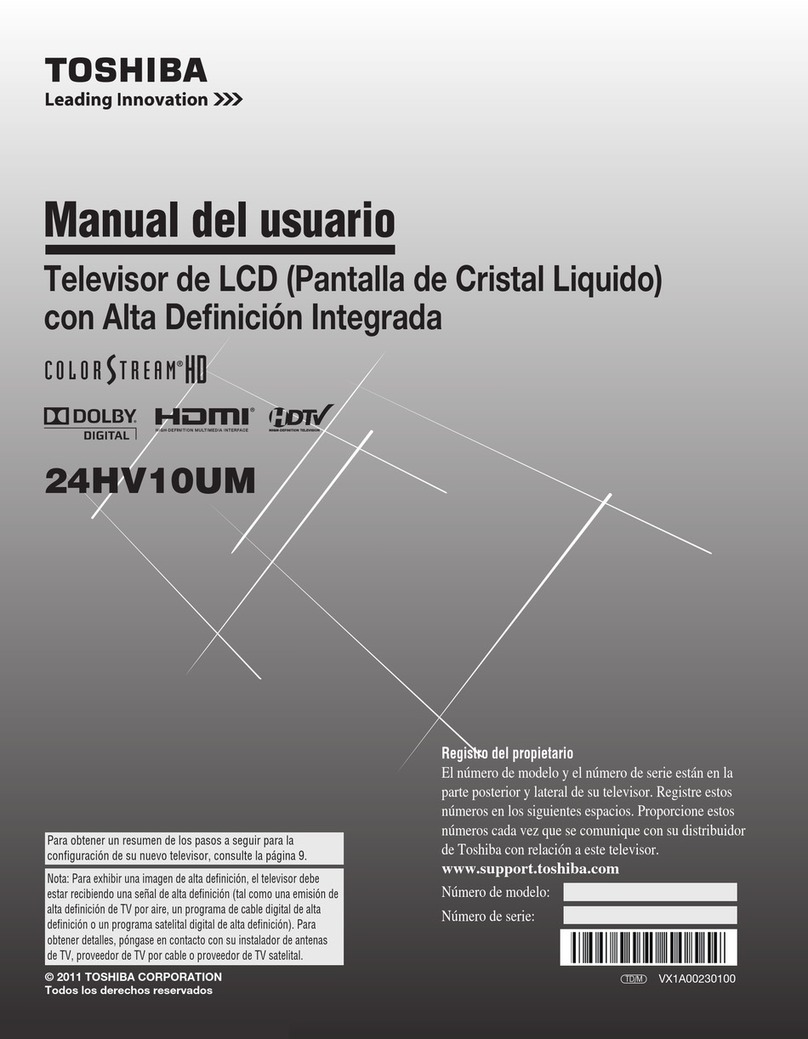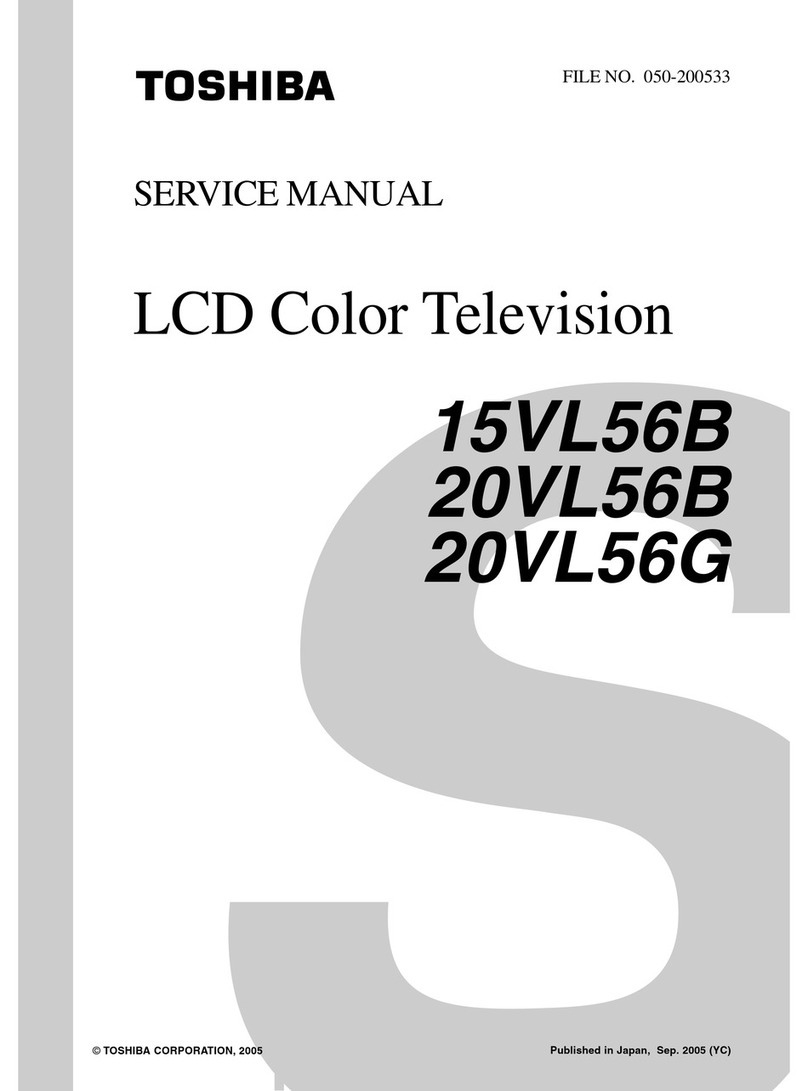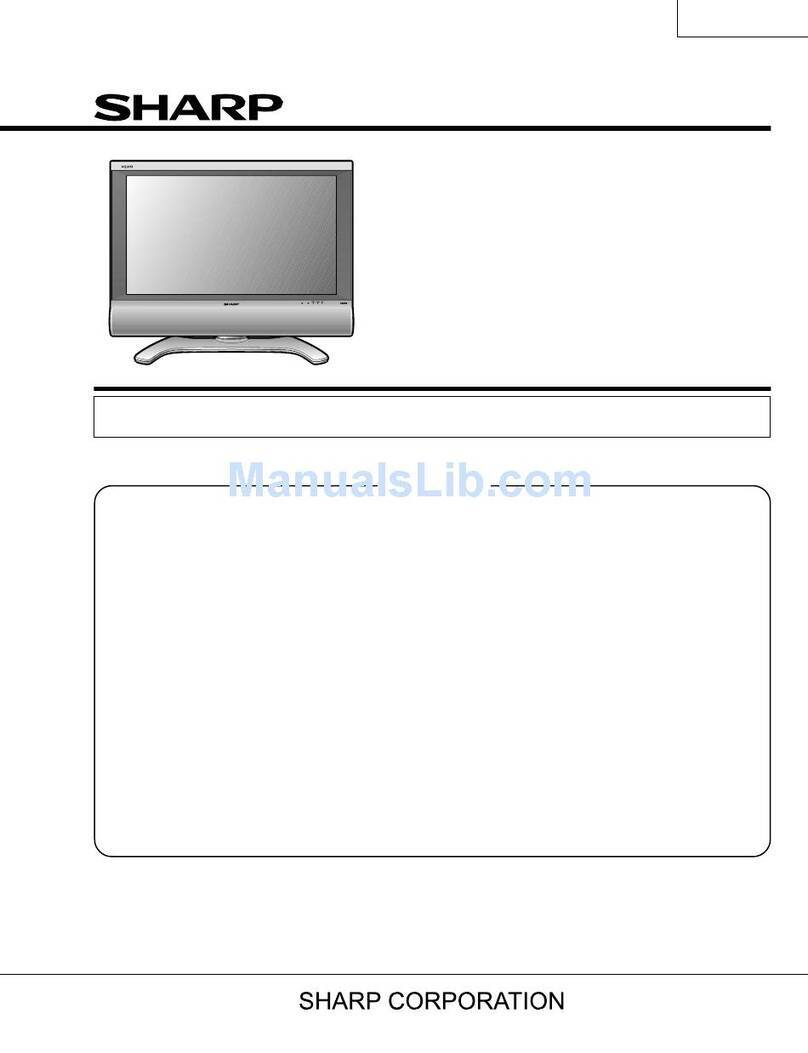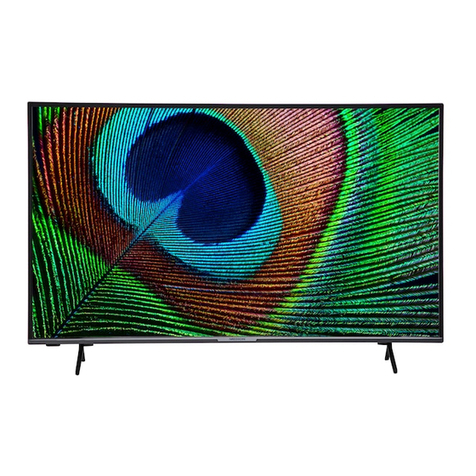Toshiba 37WLT67 User manual
Other Toshiba LCD TV manuals

Toshiba
Toshiba 42LX177 - 42" LCD TV User manual

Toshiba
Toshiba 40E220U User manual

Toshiba
Toshiba 24L1863DB User manual
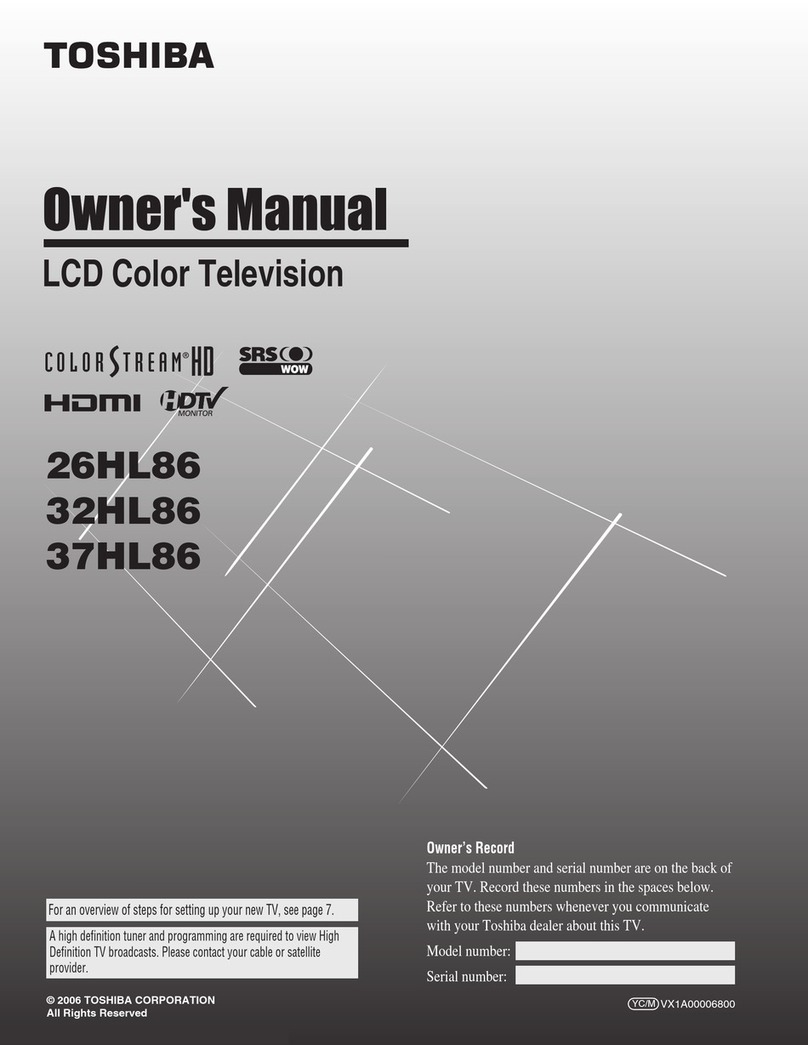
Toshiba
Toshiba 26HL86 User manual
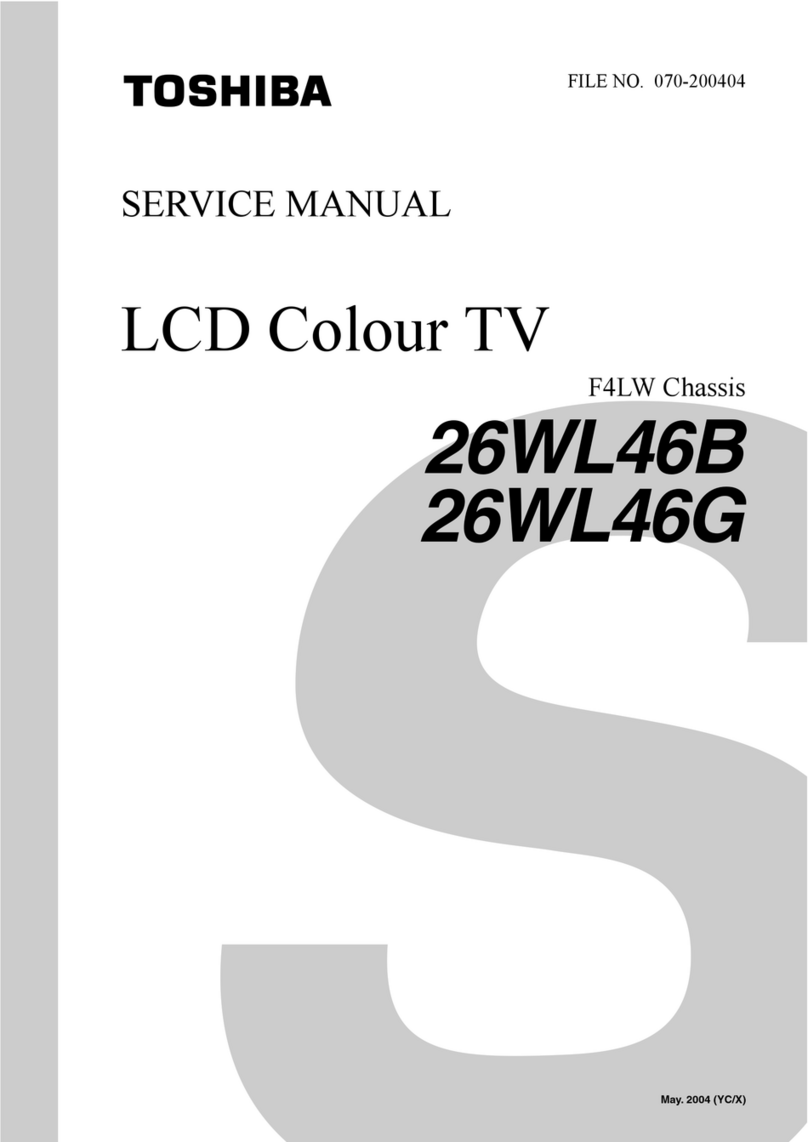
Toshiba
Toshiba 26WL46B User manual
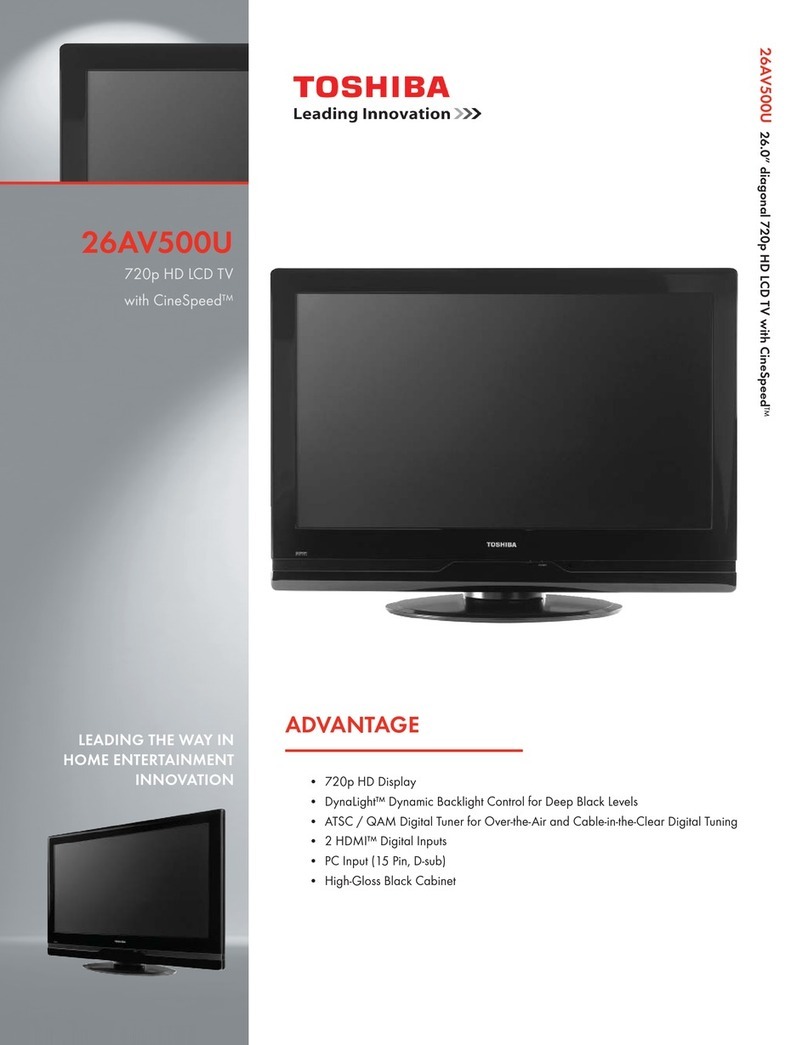
Toshiba
Toshiba 26AV500U - 26" LCD TV User manual
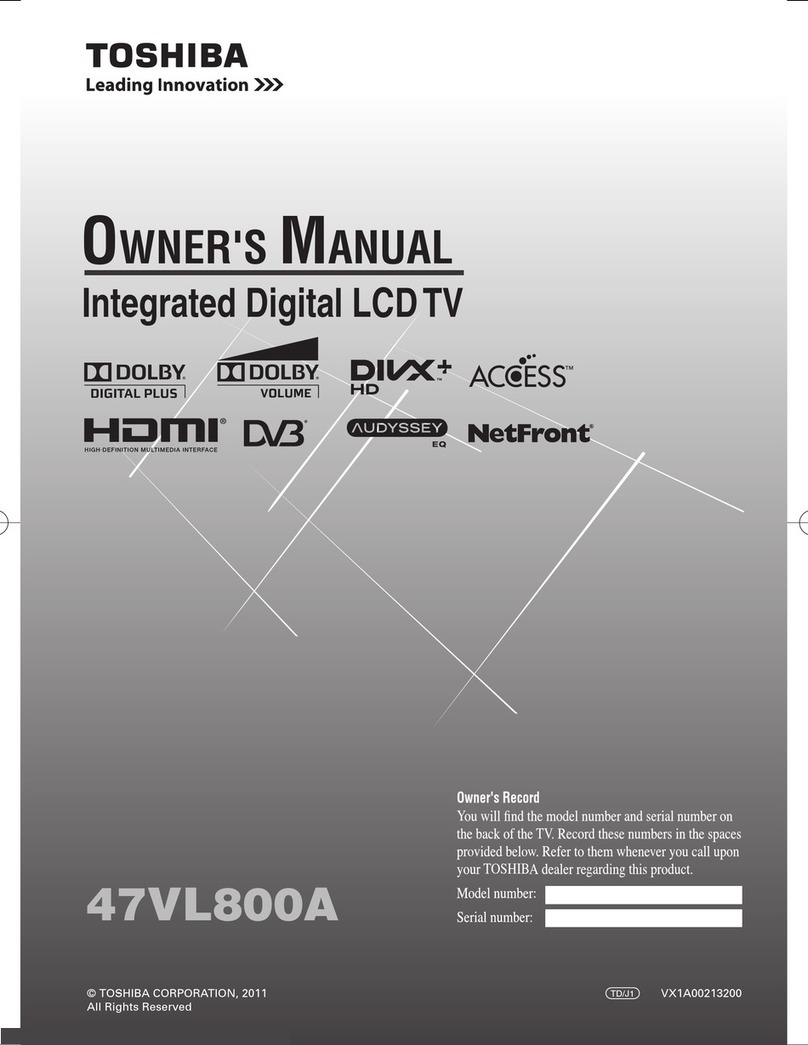
Toshiba
Toshiba 47VL800A User manual
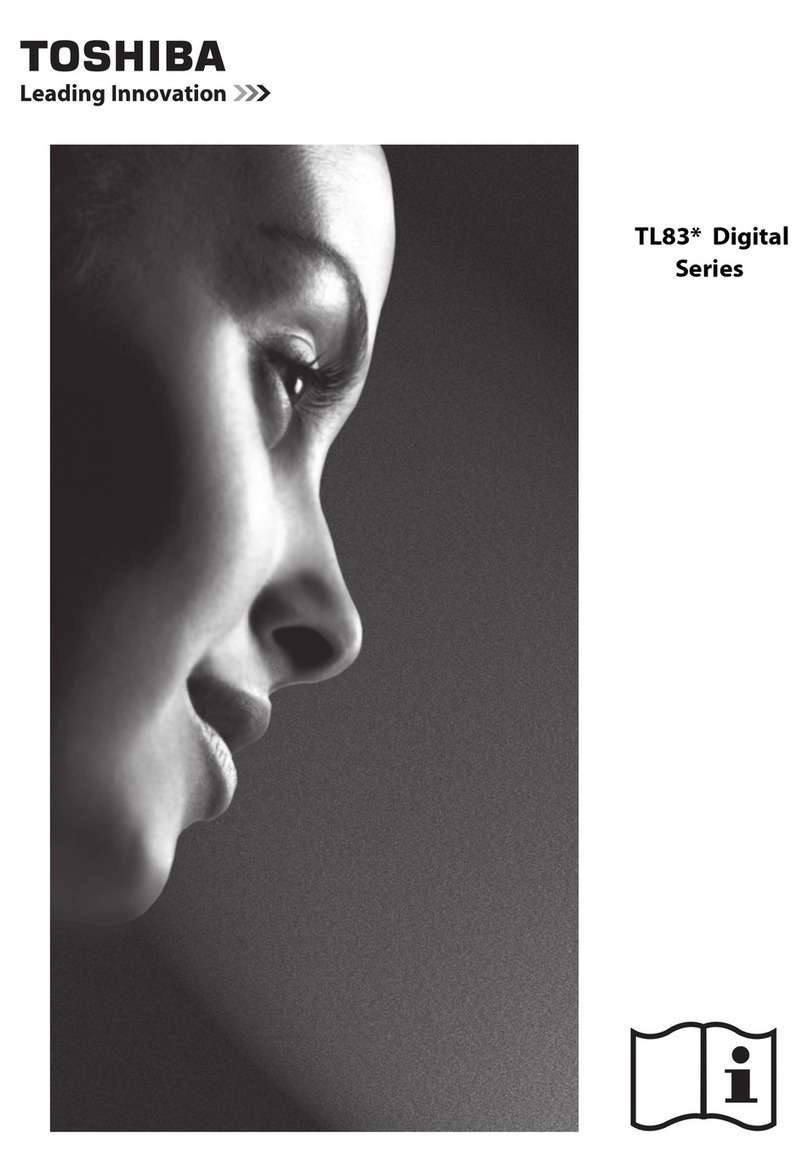
Toshiba
Toshiba TL83* Digital Series User manual

Toshiba
Toshiba 40BV705B User manual
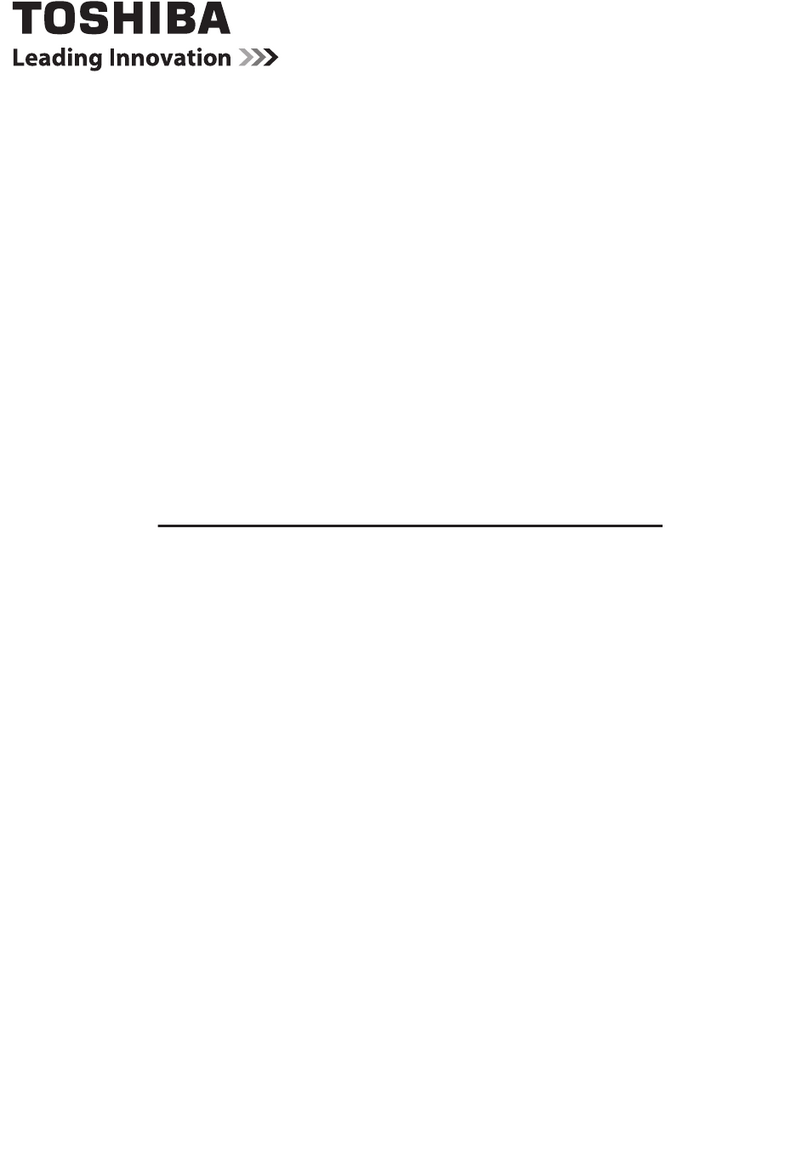
Toshiba
Toshiba 32L153 DG Series Setup guide
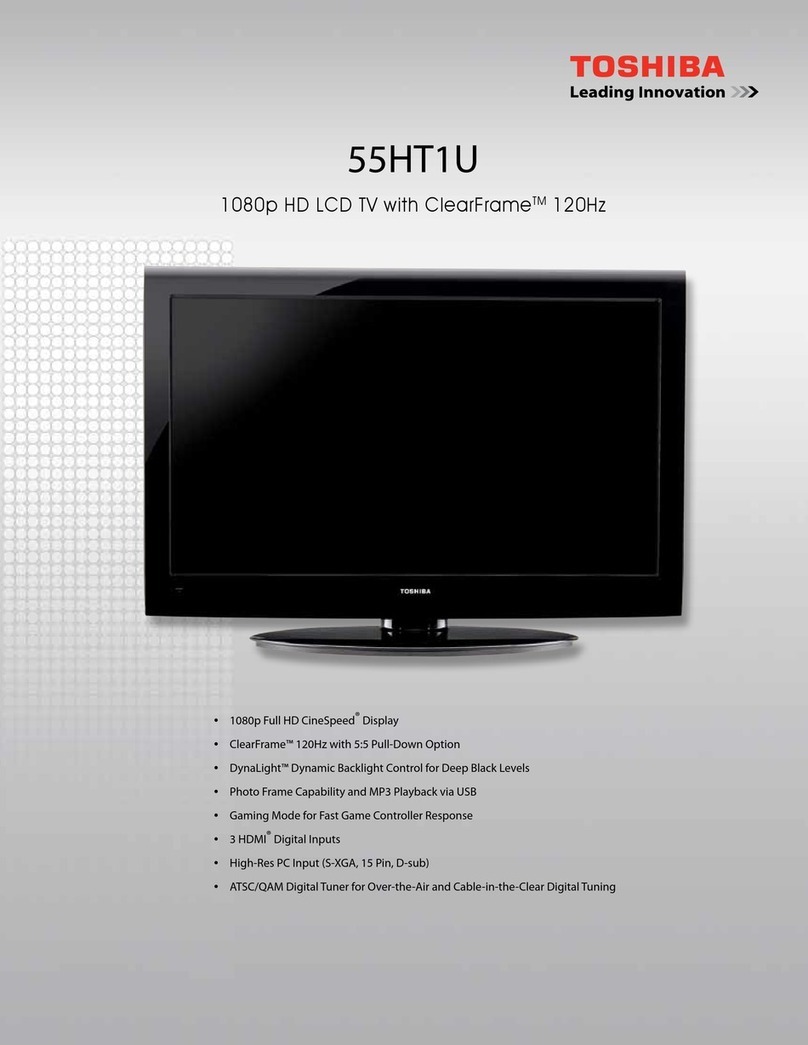
Toshiba
Toshiba 55HT1U User manual
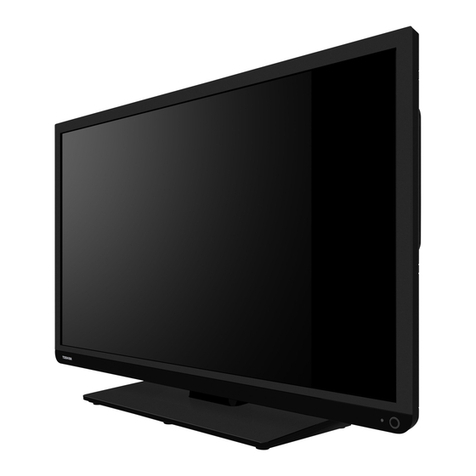
Toshiba
Toshiba 24D143DB Setup guide

Toshiba
Toshiba 39AL900A User manual
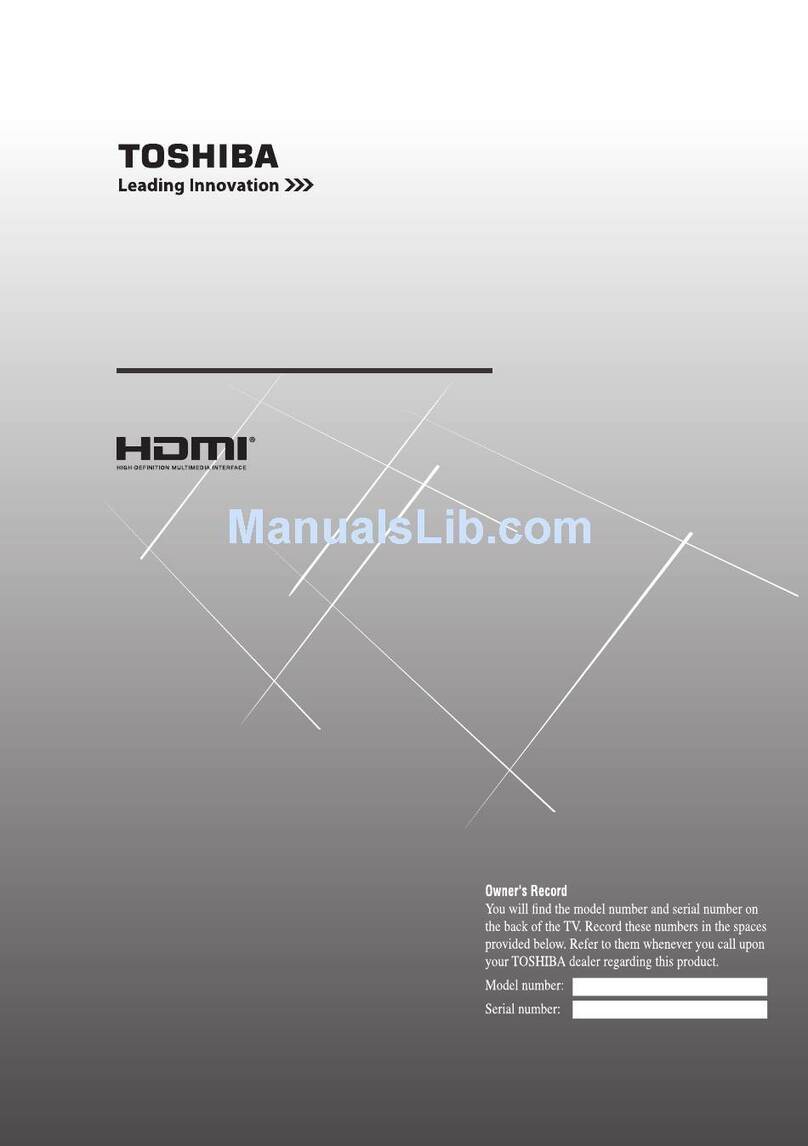
Toshiba
Toshiba 22EV700E User manual
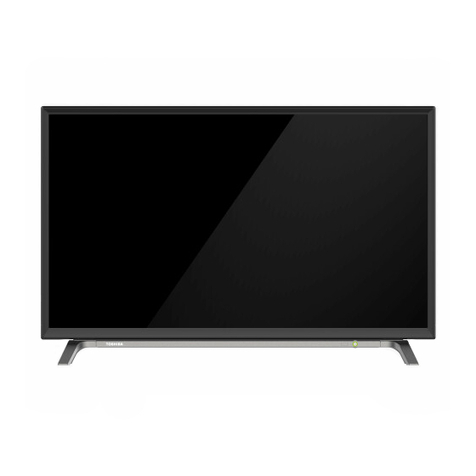
Toshiba
Toshiba 24L365 Series User manual
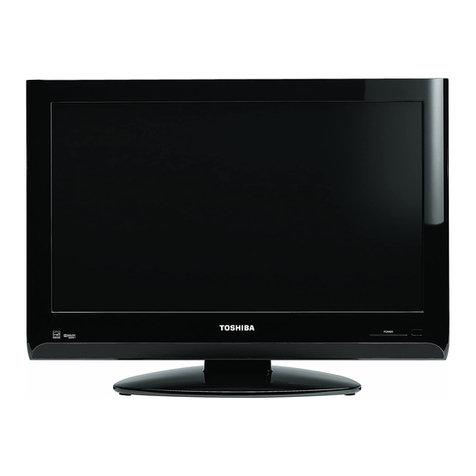
Toshiba
Toshiba 19AV600U - 18.5" LCD TV User manual
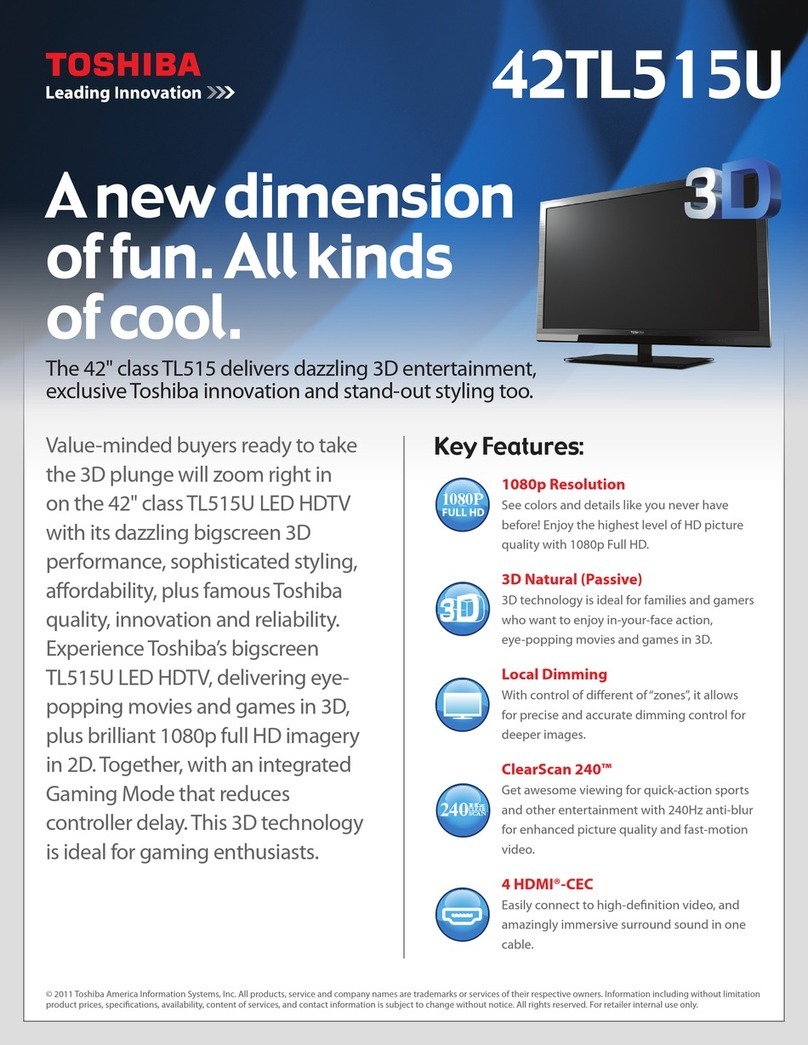
Toshiba
Toshiba 42TL515U User manual

Toshiba
Toshiba REGZA 46RV535U User manual
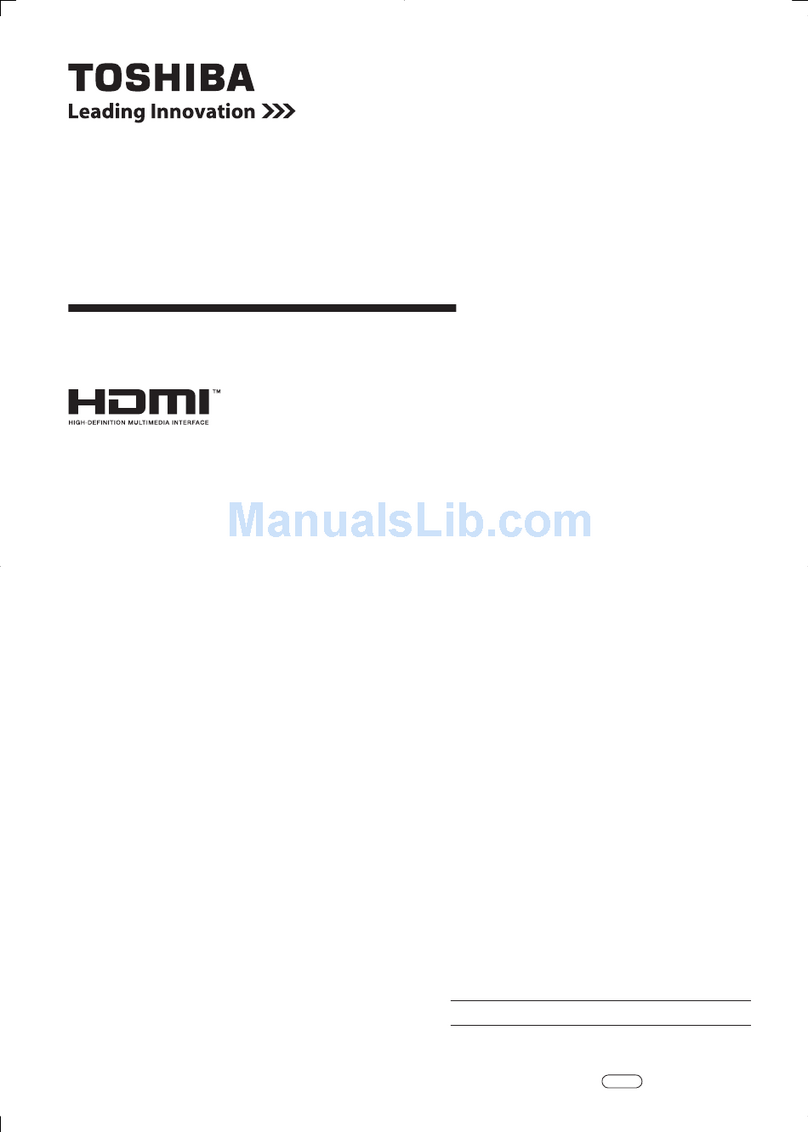
Toshiba
Toshiba 24HV10UM User manual
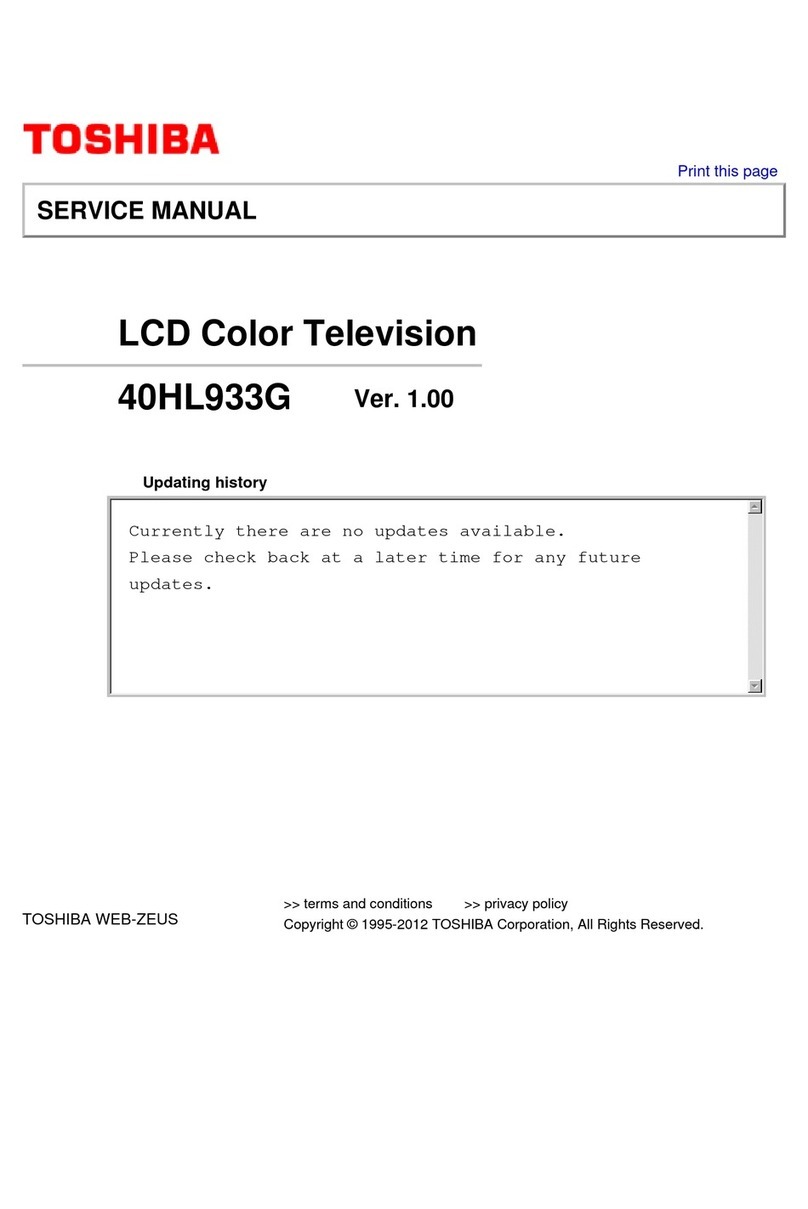
Toshiba
Toshiba 40HL933G User manual
